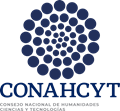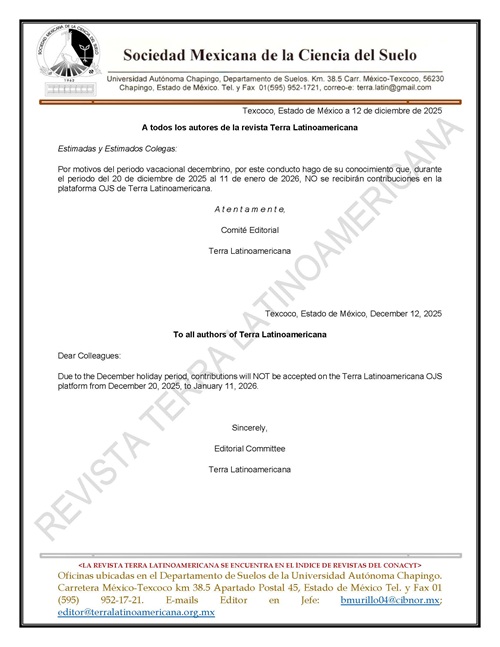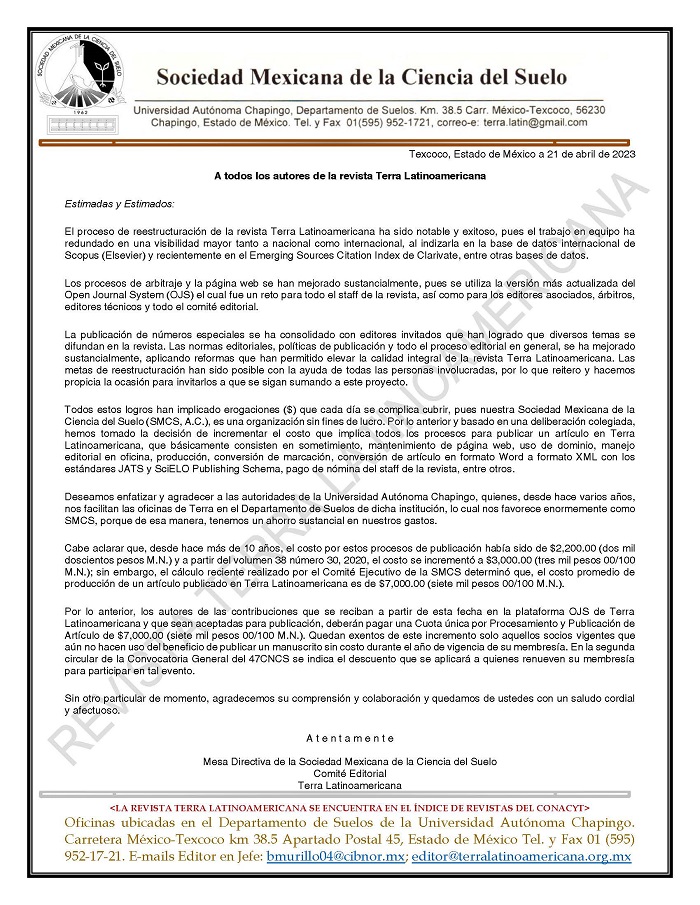Effect of biofertilizers and conservation agriculture in wheat production on Vertisol soil
DOI:
https://doi.org/10.28940/terra.v38i3.649Keywords:
biological nitrogen f ixation, arbuscular mycorrhizal fungi, cultivation production, Triticum aestivumAbstract
This study performed two assays to analyze the effect of inoculating mycorrhizal fungi on wheat production during winter both by rotating crop and increasing fertilizer doses to implement agricultural conservation practices. The following treatments were established for the f irst assay: (1) wheat inoculation with mycorrhizal fungus Glomus mosseae without fertilizer; (2) application of 200 units of N ha-1 without inoculation; (3) inoculation + 100 units of N ha-1; (4) application of 100 units of N ha-1 without inoculation; (5) inoculation + 150 units of N ha-1; (6) application of 150 units of N without inoculation. The second assay assessed the response of wheat production to the two preceding crop rotations: maize‑wheat (G-G) and bean-wheat (L-G) and four increasing nitrogen fertilization doses: 0, 100, 150, and 200 units ha-1. With the inoculation of G. mosseae + 75% of nitrogen fertilization, wheat production had the greatest grain yield (5.6 Mg ha-1) and was 36% greater than the control group with the application of only 100% fertilizer without inoculant. Wheat inoculation without nitrogen fertilizer had the lowest production (2.6 Mg ha-1). On the other hand, wheat production with L-G rotation had a better response (R2 = 0.72) at increasing N doses where the greatest grain yield was obtained with 4.7 Mg ha-1 and only 150 units of N ha-1, which corresponded to 1 Mg ha-1 more compared with the maximum wheat production obtained in the G-G rotation with 2000 units of N ha-1. The use of inoculated biofertilizers, such as mycorrhizal fungi or by the effect of crop rotation with legumes, such as bean, requires supplementary N dosage to boost wheat production; however, it is feasible to decrease nitrogen fertilizer dosage to 25%.
Downloads
Publication Facts
Reviewer profiles N/A
Author statements
- Academic society
- Terra Latinoamericana
- Publisher
- Mexican Society of Soil Science, C.A.

















